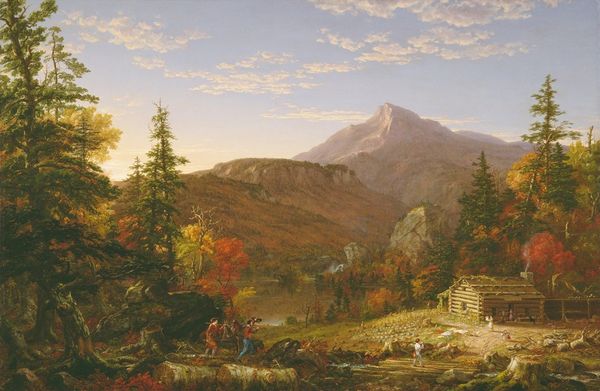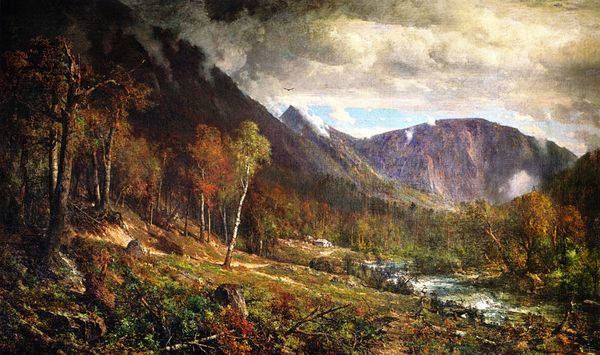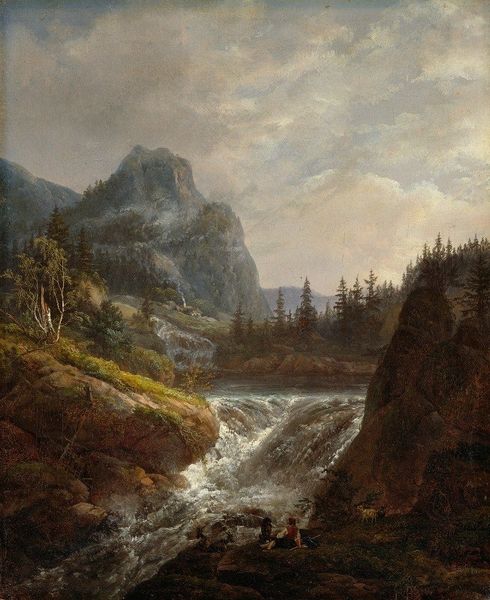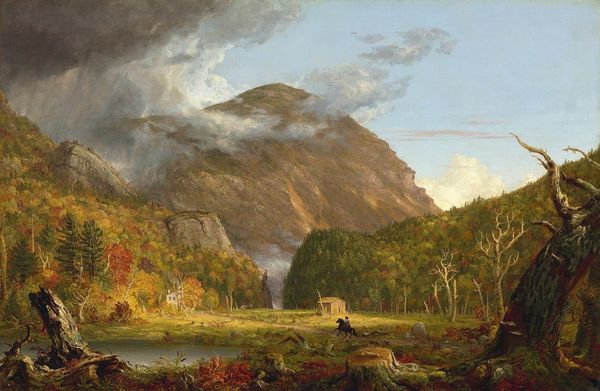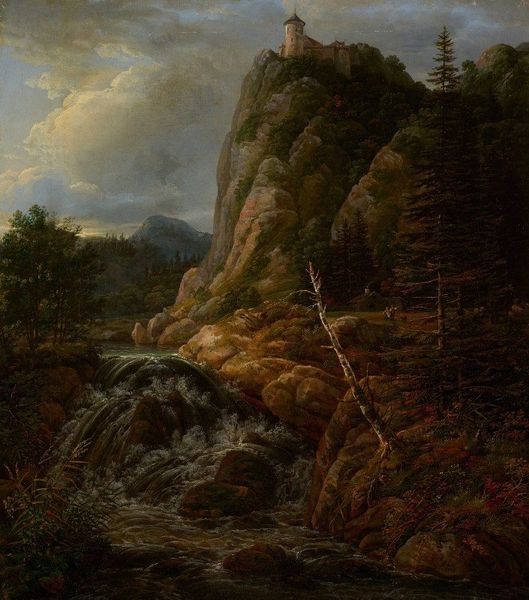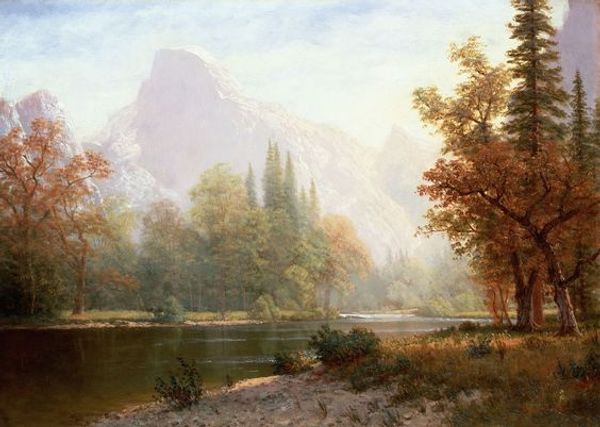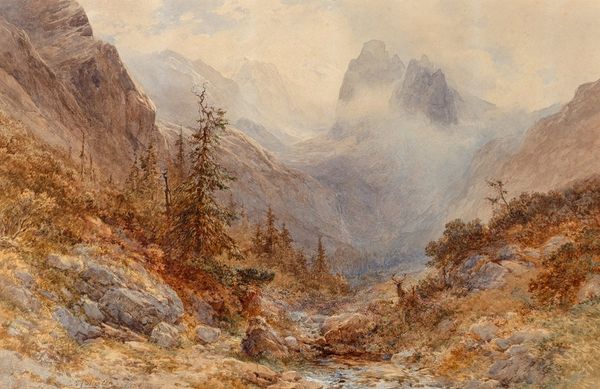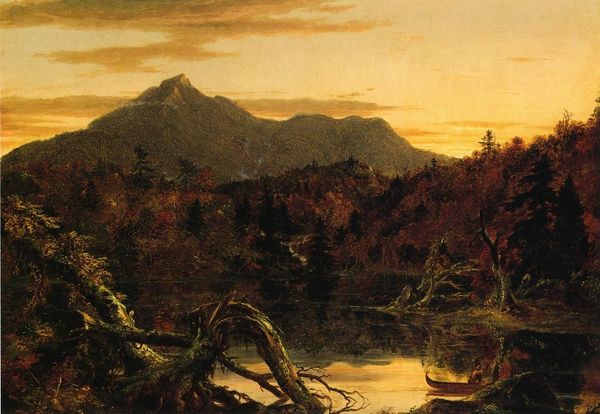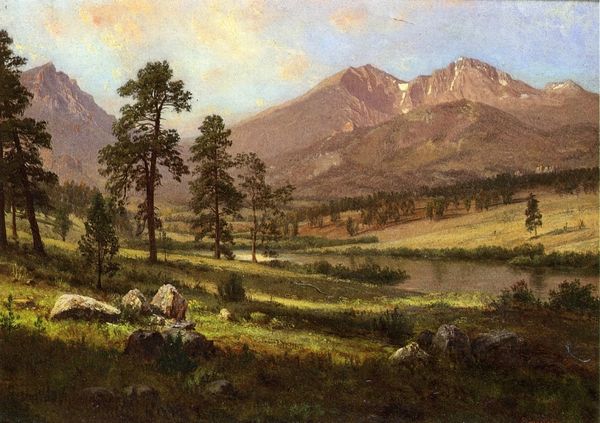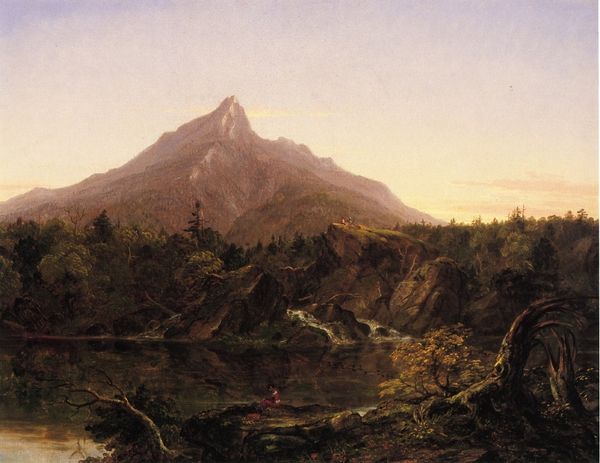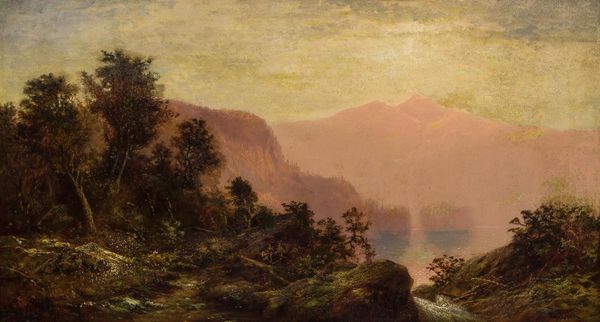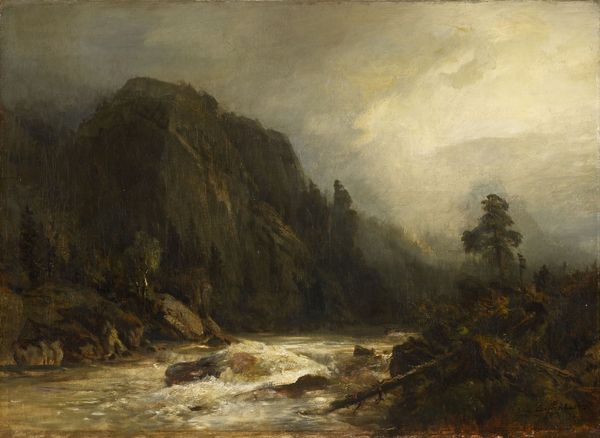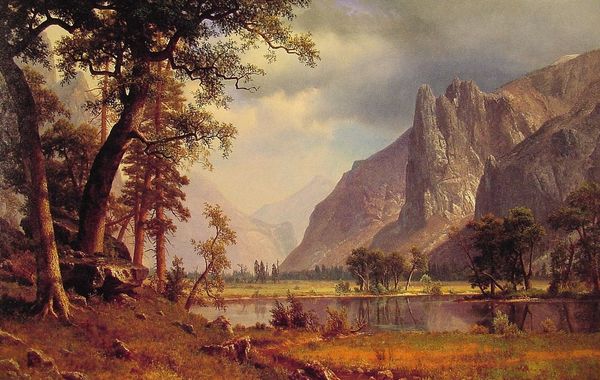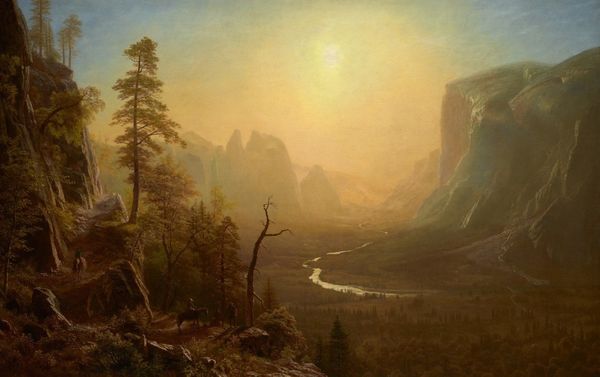
Copyright: Public domain
Editor: Jasper Francis Cropsey's "Eagle Cliff, New Hampshire," painted in 1851, is remarkable in its detail. The landscape has a stillness that feels almost melancholic. How do you interpret the significance of this seemingly untouched wilderness in the mid-19th century? Curator: That melancholy is key, and it speaks volumes about the social anxieties of the time. Cropsey, as a member of the Hudson River School, was deeply invested in portraying the American landscape. But consider this: this painting was created during a period of immense upheaval. Rapid industrialization and westward expansion were transforming the nation, often at the expense of marginalized communities and Indigenous populations. Editor: So the landscape isn't just scenery? Curator: Precisely. It's a statement. Paintings like "Eagle Cliff" reflect a longing for a simpler past and simultaneously mask the brutalities enacted on those forced off their ancestral lands, all in the name of progress and Manifest Destiny. The sublime, untouched wilderness becomes a visual trope, obscuring uncomfortable truths. Consider who is absent from this picture. Where are the Indigenous inhabitants of this land? Editor: It’s almost as if this idealized nature is only possible because of the displacement and erasure of others. I hadn't considered the politics embedded within landscape paintings. Curator: That's exactly the point. Art doesn't exist in a vacuum. By examining the historical and social contexts, we can start to unpack the complex narratives embedded within even the most seemingly idyllic scenes. What have you discovered? Editor: The romanticism masks a violent history, offering both an escape and an ideological justification for westward expansion and environmental change.
Comments
No comments
Be the first to comment and join the conversation on the ultimate creative platform.
